NEWSLETTERS
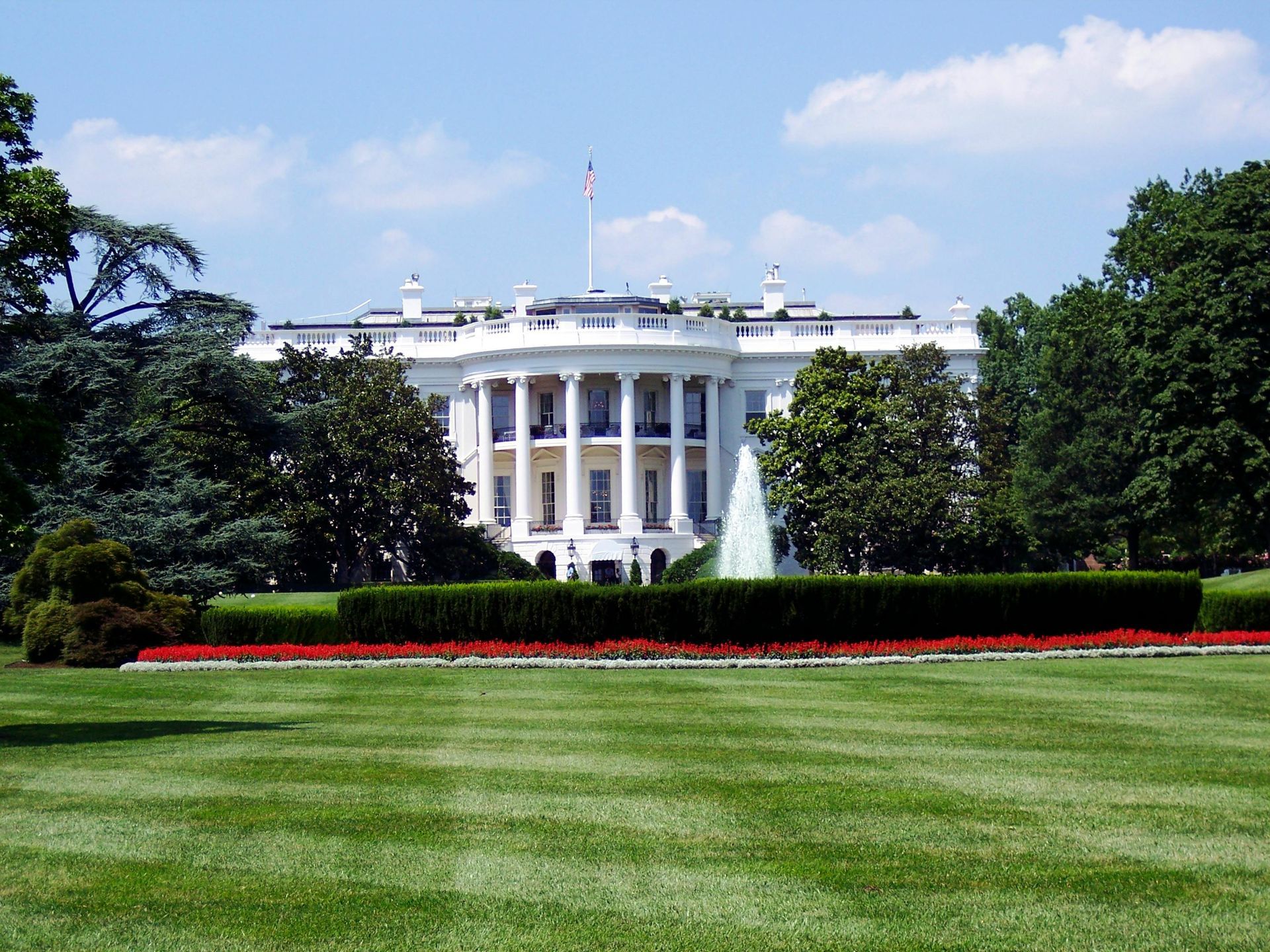
Government shutdowns in the United States (“U.S.”) are creatures of both constitutional and statutory law. The Constitution states that “No Money shall be drawn from the Treasury, but in Consequence of Appropriations made by Law,” meaning that federal agencies cannot spend funds to operate without the approval of Congress. Under the Antideficiency Act, agencies may not “make or authorize an expenditure or obligation exceeding an amount available in an appropriation or fund for the expenditure or obligation” or “ involve either government in a contract or obligation for the payment of money before an appropriation is made unless authorized by law.” In other words, Congress must determine how the government will spend its funds, and a government shutdown ensues if the parties cannot agree on a budget. The current government shutdown occurred on October 1, 2025, as a result of Congress’s failure to reach an agreement for funding federal agencies and programs for the 2026 fiscal year. The previous budget expired on September 30, 2025, and without a new budget or continuing resolution, the government was forced to shut down. One of the biggest hurdles in reaching an agreement has to do with the demands by the Senate democrats. In order to vote for a continuing resolution or extension of the 2025 fiscal budget, the Senate Democrats are demanding in part that Congress resume Medicaid, Medicare and Affordable Care Act premium subsidy policies that open the door for illegal aliens to receive government benefits. Those benefits were terminated when the One Big Beautiful Bill Act (OBBBA)was approved. OBBBA provides eligibility for health benefits only to U.S. citizens, lawful permanent residents, Cuban and Haitian entrants, and lawful residents under the Compact of Free Association. The Senate Democrats’ continuing resolution would repeal changes made by OBBBA. What are the impacts of this shutdown? Members of Congress still get paid during this shutdown. Lawmakers' pay has been funded by a permanent appropriation since 1983, according to a recent Congressional Research Service report , meaning funding for their pay doesn't need to be renewed annually. Other government employees and contractors are not afforded the same luxury. Federal employees, whether they remain on the job or are furloughed do not get paid while the government is shut down. They are also at risk of permanently losing their jobs. For those federal employees who still have their job, they will receive back pay once funding to their agency is restored. But for now, those same federal employees have to work without collecting a paycheck if they choose to keep their job. Government Contractors (1099 contractors, not W2 Employees), those who carried out about $755 billion worth of government work in the last fiscal year, are not guaranteed back pay. They should have a written contract which outlines their pay, and should eventually hold up in a court of law; but how long they have to wait for payment of said contract would remain uncertain. During a government shutdown, the administration retains limited spending flexibility by prioritizing funding for programs that the president deems essential for public safety or national security, such as military operations or emergency services. Agencies may also reallocate available funds to maintain critical operations, provided those actions comply with the Antideficiency Act and other legal constraints. For most companies, one of the biggest hurdles will be navigating a complex regulatory scheme that relies on federal agencies to function. As the shutdowns disrupt these agencies’ operations, businesses and federal employees will be adversely affected. How much individuals will be affected will be largely determined by the duration of the shutdown. The longer government workers and contractors go without paychecks, the more likely they are to start looking for new jobs. A longer shutdown, in addition to possible layoffs and unclear guidance regarding back pay, may leave the government with a substantially smaller workforce post-shutdown. Tickers to consider: JTAI , VNRX , FBRX , POAI , PPCB , Sylva Disclaimer: https://www.sylvacap.com/disclaimer

Digital Asset Treasury Companies (DATCO) are publicly traded firms that focus on accumulating and managing digital assets like Bitcoin and Ethereum as a core part of their business strategy. They provide investors with exposure to cryptocurrencies without the need for direct ownership, often utilizing equity and debt to fund their asset acquisitions. This allows the companies to fund asset acquisitions by borrowing money through loans or issuing bonds, thereby sanctioning the companies to purchase assets without using its own cash reserves. DATCO’s took off in 2020 when Strategy (formerly MicroStrategy) started gobbling up Bitcoin (BTC) as an inflation hedge. In August 2020, Michael Saylor, founder of MicroStrategy, led the company’s dramatic push into becoming a DATCO with the purchase of over 21,000 BTC for $250 million. As of September 15, 2025, Strategy owned almost 640,000 BTC valued at $47.2 billion. During that same period, Strategy’s market value has risen over 2,700% (92.0% annualized), capturing the imaginations of finance and financial technology people alike. DATCO’s differ from crypto miners or exchanges in that they are all about accumulating assets, with digital holdings making up 70-90% of their enterprise value. Below are some key features of DATCO’s: Core Functions: DATCO’s aim is to hold digital assets as the primary function of their business model. Investment Access: DATCO’s provide investors with exposure to cryptocurrencies without the need for direct ownership or management of the assets. This makes it an attractive alternative for investors who want crypto exposure but prefer not to hold tokens directly. Revenue Generation: DATCO’s can generate income through various means, including lending services and decentralized financial protocols. The uniqueness of a DATCO lies in its dual nature. It is simultaneously a publicly traded company and a capital markets vehicle for direct exposure to a specific digital asset. For investors, this offers a compelling alternative to owning the asset directly or through an exchange-traded fund (ETF). There are several rewards associated with investing in DATCO’s. Investors benefit from the expertise of professionals who specialize in managing digital assets. DATCO’s often adhere to regulatory standards, providing for a safer investment environment. Finally, DATCO’s ensure liquidity for their digital assets, which makes for easier transactions. DATCO’s come with their own set of challenges and risks. For example, the Stock Market’s Volatility can significantly fluctuate the value of digital assets, impacting the financial stability of DATCO’s. Additionally, changes in regulations can affect operations and the profitability of DATCO’s. Lastly, funding can be a big risk when it comes to DATCO’s. Most DATCO’s rely on external capital to fund their asset accumulation strategies. This can be very risky in volatile markets. The true strength of a DATCO will be measured not by the size of its digital asset holdings at a bull market peak, but by its ability to navigate volatile markets, manage funding costs prudently, and build sustainable business models that can withstand the inevitable digital asset market downturns. The companies that master this balance will not only survive but will cement their place as true pioneers in the next generation of finance. The rise of these companies into DATCOs helps to foster a more efficient, transparent, and accessible financial system. This benefits business investors, broadens the economy, and encourages individuals or investors to participate in DATCO investments. Tickers to consider: JTAI , VNRX , FBRX , POAI , PPCB , Sylva Disclaimer: https://www.sylvacap.com/disclaimer

The Federal Fund rate, which impacts interest rates, can potentially be cut at the Fed’s policy meeting this month. Cutting interest rates can potentially stimulate the economy by making borrowing cheaper, which encourages spending and investments. However, some experts believe that rate cuts may not be enough to boost the current economy. According to the CME FedWatch tool, investors are quite certain that the Fed will cut interest rates in September by at least 25 basis-points. There are several benefits that could arise from reducing interest rates. Loans would become cheaper for consumers and businesses. Consumers may be more inclined to borrow money for larger purchases, such as a home or a vehicle. Lower rates can finance business operations and expansions, leading to the creation of more jobs. There are a few who don’t believe cutting interest rates will help the current state of our economy. David Kelly, the chief global strategist at JP Morgan Asset Management, stated that interest rate cuts are inevitable, but “that’s not going to fix anything.” Morgan discussed three reasons why he does not see rate cuts helping the economic picture with CNBC. Lower interest rates could cut income for retirees. Retirees tend to store a larger chunk of their savings in safer assets, like US Treasurys, which are tied to interest rates in the broader economy . If the interest rate goes down, then the interest income decreases. Hesitant borrowers might make cutting rates have a backfire effect. Hesitant borrowers tend to “wait and see” if the rates will drop even further before taking the plunge to loan money just to make sure that they are getting the best rate possible. Kelly speculates that borrowers will be incentivized to wait for rates to drop further before taking out loans. There is still a looming uncertainty of how much the Trump administration’s tariff policy and immigration policy will affect the economy. Lowering interest rates will not remove this uncertainty. Lastly, there is always the concern that lowering interest rates will actually boost inflation in an already elevated state. If consumer demands increase too quickly due to lower rates, then the result is inflation. This would undermine the purpose of the rate cuts. In short, lowering interest rates may temporarily boost the economy. But the long-term effects of reduced interest rates are affected by many other factors that might limit their effectiveness in the current economy. Economic uncertainty, borrower behavior and inflation risks can complicate the benefits of monetary policy actions. Tickers to consider: JTAI , VNRX , FBRX , POAI , PPCB , GRCE Sylva Disclaimer: https://www.sylvacap.com/disclaimer
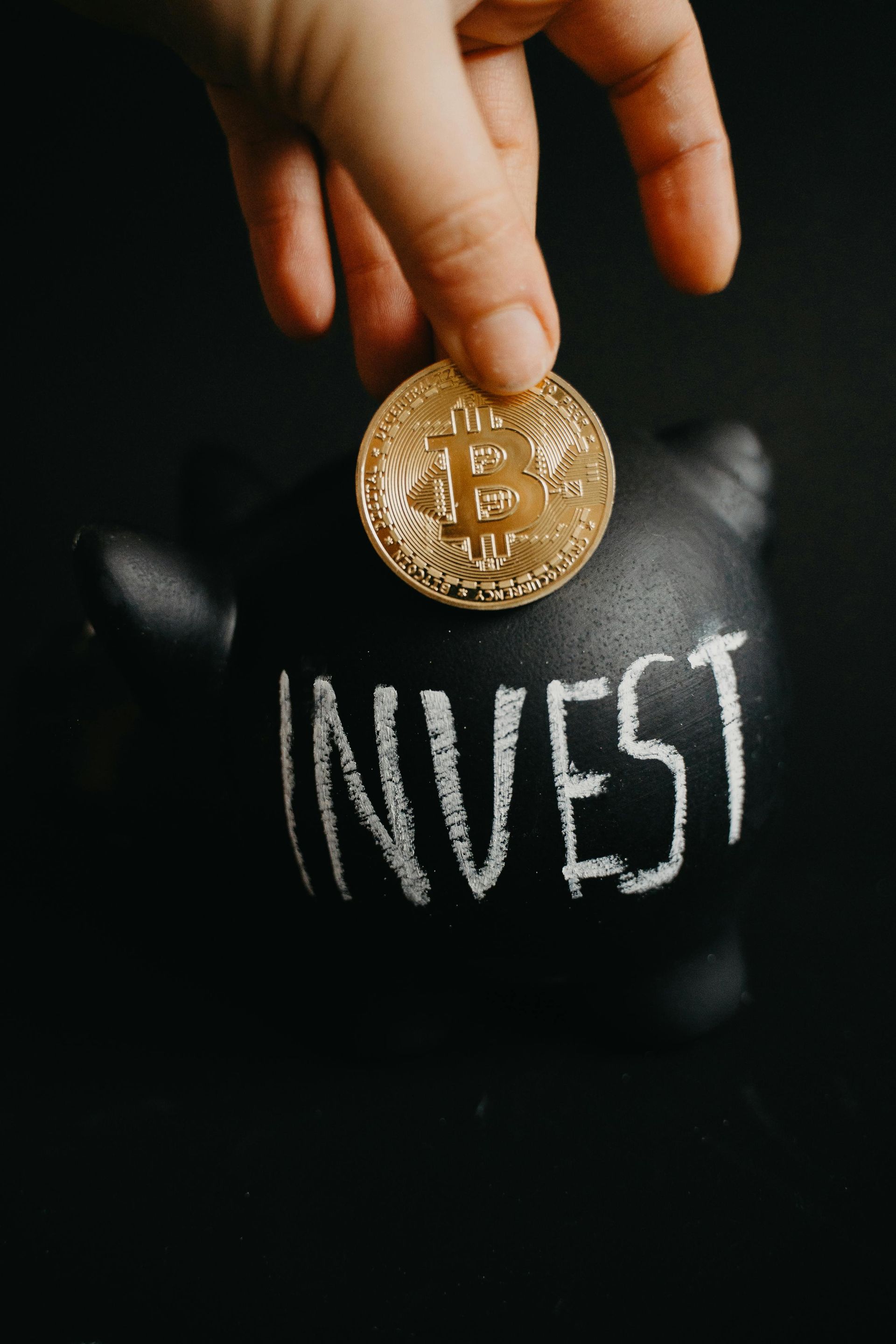
The US stock market continues to trend higher after overcoming a challenging period earlier this year. On April 7, 2025, the S&P 500 hit an all time low. Since then, it has gained more than 28% in value and repeatedly reached all time highs. On Friday, Aug. 1, 2025, US stocks dipped after President Trump hit every US trading partner with sweeping tariff hikes and the July jobs report showed signs of a labor market slowdown. President Trump refuted the July jobs report, stating that the Bureau of Labor Statistics Commissioner manipulated prints for political purposes. Despite the August 1 dip and the July jobs report, on Monday, August 4, 2025, Wall Street stocks rallied as investors jumped on a market pullback, shrugging off economic worries and focusing on the rising odds of Federal Reserve interest rate cuts. S&P 500 gained 1.5 per cent to 6,329.94, while the tech-rich Nasdaq Composite Index jumped 2.0 per cent to 21,053.58. The August 4th trading session effectively reversed the losses from August 1, 2025. It can be speculated that the volatility of the market can be linked to the uncertainty of the effects of the Trump trading tariffs on the economy. However, it appears as though investors are shrugging off those worries of economic uncertainty and focusing on the likelihood that the Fed will cut rates in September. Mr. Steve Sosnick of Interactive Brokers stated, “Traders and investors have made a lot of money by deciding that tariffs won’t matter.” According to Sosnick, the bias of most investors is “Let’s not think about tariffs as being a problem until they actually prove that they are.” Regardless of the reasoning, the market is up. Overall, year to date, the major stock market indexes are showing positive gains in 2025: the S&P 500 is up 7.86%, the Dow Jones Industrial Average is up 4.2%, and NasDaq is up 9.19%. The rollercoaster ride of the market may continue. But so far, under Trump’s economic policies, it appears as though the market is fairing well. Tickers to consider: JTAI , VNRX , FBRX , POAI , Sylva Disclaimer: https://www.sylvacap.com/disclaimer

The US job market continues to chug along despite heightened uncertainty about the economy and how President Donald Trump’s tariffs could shake out.According to the June jobs report, Job growth was solid at 147,000 and the unemployment rate was at 4.1%, down from 4.2%. Despite the continuation of fairly solid monthly employment gains, the jobs report showed several potentially concerning signs. N early half of the jobs added were from the government sector. Private industry showed only the smallest gains in the last eight months . Additionally, the reduction in the unemployment rate was in part due to the fact that some people left the labor force, whether to retire, or voluntarily quit their jobs. Finally, the average work week for all private non-farm payrolls fell to 34.2 hours in June, down from 34.3 hours in May. This suggests that employers are reducing the hours of their employees. If this is the case, it is likely to see weaker job growth in the months ahead. Perhaps the biggest negative in this report is a slowing in the pace of wage growth. The annualized rate of growth comparing the last three months (April-June) with the prior three (January-March) is just 3.2 percent, down from 3.7 percent year-over-year. According to Brian Bethune, an economics professor at Boston College, "The private sector was clearly losing momentum in the latter part of the second quarter, which does not augur well for the performance of the economy in the third quarter.” Are these potentially concerning issues a real threat to the economy, or is it a necessary “hiccup” required to correct the problems caused by Biden-economics and the inflation that has ravaged the country since 2020? The policies that were implemented during the Covid Pandemic, in which the government paid people to stay home and not work has crippled this economy. Five years later, employers are struggling to find skilled workers who will work for a reasonable wage. In fact, they are struggling to find people who will just show up to work. This has created extreme wage hikes just to get people to show up to work, which is costly to the employer causing him to limit the number of hours his employees can work. For example, pre-Covid, unskilled construction laborers made an average wage of $10-$12 hour depending on their level of skill. Today, that same unskilled worker will not show up to work for less than $25/ hour. This creates an extreme burden on the employer, who now can either only hire one worker instead of two, or has to raise his rates to his customer in order to meet the demand of payroll. Another problem is the inflated interest rates that occurred during the past 5 years. This has caused increases to mortgage payments for those who are purchasing homes. This in turn increases the rent that a landlord has to charge in order to make his rental property pencil out. In Bend, Oregon, an average monthly rent payment for a 3 bedroom/ 2 bath 1500 sq. ft. home pre-Pandemic was between $1200-$1500/ month. Today, that same home would rent for $3000/ month. We all know that the cost of food and groceries have gone through the roof in recent years. The high cost of living makes it almost impossible for workers to accept a “reasonable” wage. They simply cannot live on less than $25/ hour due to the high cost of living. A correction needs to occur in order to get things under control. Wages, rents, mortgages and food needs to become more affordable and reasonable. How this will occur has still yet to be answered. Maybe reducing the work week hours, and reducing wage growth is a start. But the government needs to do their part by not making it so easy for people to not go to work. There are a lot of people who choose to not go to work, because they make more off of their unemployment check than they would going to work. That has to stop! That will just promote laziness and lead to higher unemployment. Both are detrimental to the economy and the country as a whole. Tickers to consider: JTAI , VNRX , ZVSA , FBRX , POAI , PPCB Sylva Disclaimer: https://www.sylvacap.com/disclaimer

Layoffs in 2025 are reshaping the workforce. Government, tech, retail, accounting, manufacturing, and logistics have been dealing with the biggest cuts. Driven by tariffs, cost-cutting, AI adoption, and federal downsizing, these layoffs show a shift in the economy. Government-related layoffs remain the biggest single source of reductions, with more than 284,000 job cuts attributed to direct or indirect impacts of Elon Musk’s Department of Government Efficiency (DOGE). The Retail industry announced 11,483 job cuts in May, bringing their total year to date job layoffs to more than 75,000, up 274% from 2024. Tech Layoffs also surged. According to data by Challenger, Gray & Christmas (CG & C), an outplacement firm, the tech industry holds the bronze medal for most layoffs in 2025. Total layoffs for 2025 hover right at 75,000, representing a 35 year over year surge. Why is this happening? What are the reasons behind the mass layoffs of 2025? Per CG & C, nearly half of all layoffs so far in 2025 have been driven by cuts related to the DOGE’s efforts to reduce government waste, and restore fiscal discipline to the federal government. Another big contributing factor in the layoffs across the sectors is Artificial Intelligence. Tools like ChatGPT, GitHub Copilot, and RPA (Robotic Process Automation) have made several support and low-code tasks redundant. Those who haven’t upskilled to work with AI are the most vulnerable to losing their jobs. This segues into another contributing factor…. employees working in outdated technologies. Many of these employees are being replaced by fewer, highly skilled professionals in AI, Cyber security, and Data Engineering. Today, layoffs are not about performance, but about irrelevance. Finally, thanks to remote work, companies can now hire skilled talent from anywhere. While this is a plus for employers, it also comes with negative consequences such as more pressure for local salaries, more competition for every job, and outsourcing jobs to cheaper regions. How can individuals position themselves to be layoff-proof? Most people would agree that reducing government wasteful spending and restoring fiscal discipline to the federal government is a good thing; therefore those layoffs will probably continue until that gets under control. However, while those government employees may not currently be layoff-proof, they can reinvent themselves to become layoff-proof if they are willing to put in the work. Here are a few tips: Learn future ready skills such as AI, Data, Cloud, etc. Be agile and ready to adapt to cross-functional roles. Upgrade your tech stack regularly through certifications, real world projects, and online courses. Layoffs in 2025 are not just about cutting costs. They are also about realigning talent with the future of work. Tariffs and trade wars are sometimes scapegoats for companies. They may use these trends to conduct firings, pivoting to AI-driven models. If a person is working in outdated technologies, or not adapting to the new AI driven world, then their risks are real. However, opportunities are just as real. Those who take initiative, invest in upskilling, and stay future focused will not only survive, but will thrive. Tickers to consider: JTAI , VNRX , ZVSA , FBRX , POAI , PPCB Sylva Disclaimer: https://www.sylvacap.com/disclaimer

The price of gold has increased rapidly in the months since Trump took office, surging particularly since his April 2 announcement of a baseline 10 percent tariff on all US imports. Gold has often been regarded as a safe-haven asset during times of economic uncertainty. When the economy is shaky, investors put more of their money into gold to preserve their wealth and protect their portfolios. Gold typically has an inverse relationship with interest rates. When interest rates go up, the value of gold often goes down. The reason for this is that higher interest rates make other investments, such as stocks and bonds, more attractive to investors, thereby decreasing the demand for gold and subsequently its price. Should this trend continue, lower interest rates could affect the economy in several ways. Lower interest rates make it cheaper to borrow money. This tends to encourage spending and investments. Lower interest rates will reduce the monthly costs of mortgage repayments. This will leave households with more disposable income and potentially cause a rise in consumer spending. Lower interest rates make it more attractive to buy assets, such as houses, land, vehicles and businesses. This will cause a rise in prices and therefore a rise in wealth. Gold maintains its intrinsic value better than any other commodity. It remains our best barometer of monetary trouble. A sustained rise in gold prices typically signals inflation; a price decline indicates deflation—a shortage of dollars. According to Forbes, The Federal Reserve fundamentally misunderstands inflation. Monetary inflation results from reducing a currency's value, by creating too much of it. Non-monetary inflation occurs when prices rise due to production disruptions: natural disasters, wars, pandemic lockdowns that severed supply chains, costly regulations, or certain tax increases. Gold has climbed over 60% since mid-2023, during the very period when the Fed claimed to be fighting inflation through interest rate hikes. The Fed's flawed thinking lies in its belief that prosperity causes inflation. Per the Fed’s reasoning, in order to lessen inflation, then the economy needs to be slowed. This approach fails to account for non-monetary price changes or the consequences of a weakening dollar. Stabilizing the dollar appears to be a better approach to fight inflation. The Federal Reserve should focus on returning to a “gold-backed” standard for the dollar. By focusing on dollar stability rather than manipulating interest rates, the Fed could end inflation without causing economic contraction. This addresses the monetary cause directly rather than attempting to slow growth—a strategy that inevitably causes unnecessary economic pain. The warning from the gold market cannot be ignored much longer. The question is whether the Fed will heed it before it's too late. Tickers to consider: JTAI , VNRX , ZVSA , FBRX Sylva Disclaimer: https://www.sylvacap.com/disclaimer
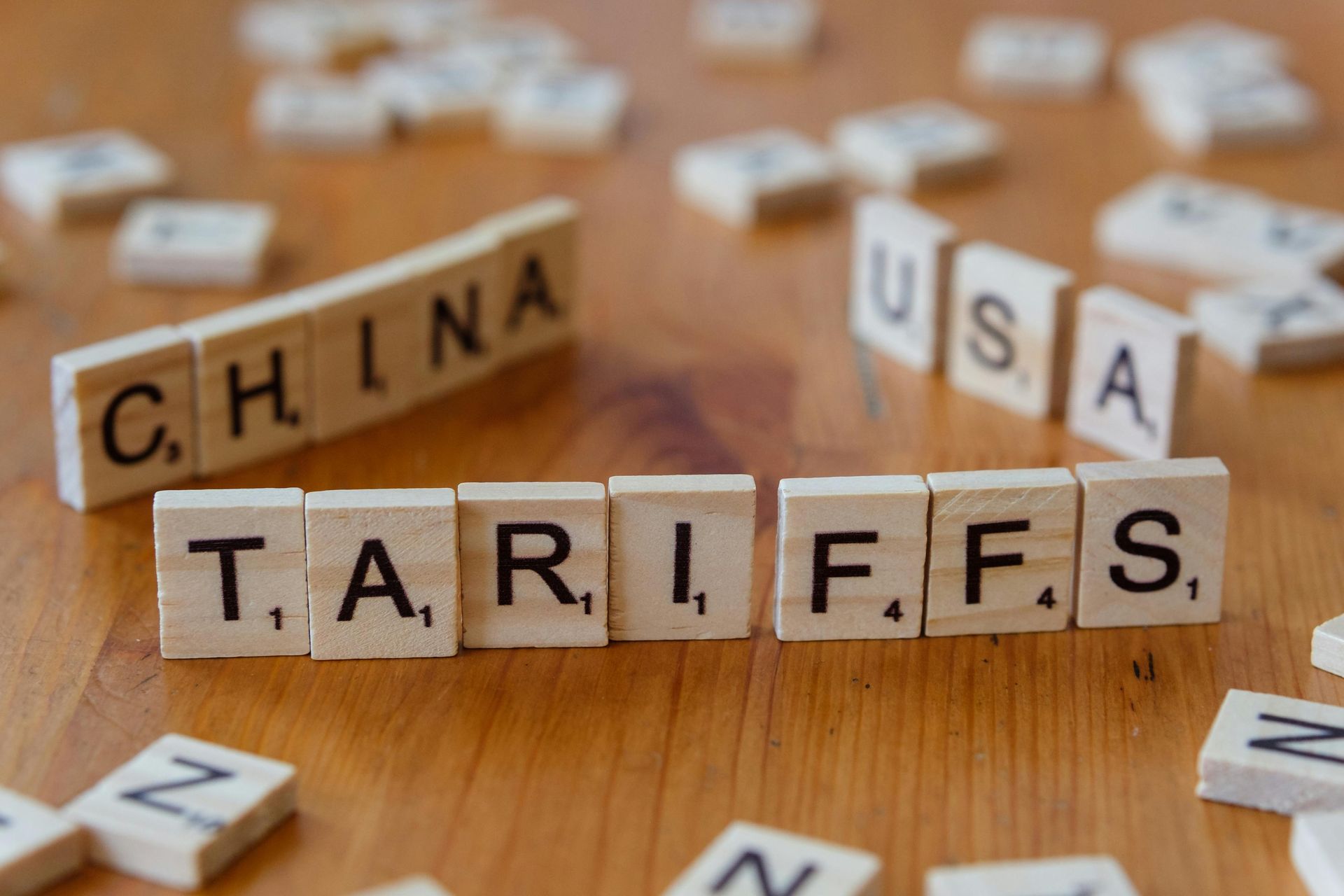
On Wednesday, April 2, 2025, President Donal Trump announced new tariffs on nearly all U.S. Trading partners, including 34% tax on imports from China, and 20% tax on the European Union. Responding to what he considered an economic emergency, elevated tariff rates will be placed on several countries that run trade surpluses in the United States and a 10% baseline tax will be imposed on imports from all countries. The purpose behind these tariffs is to boost domestic manufacturing here in the United States, and at the same time bring in hundreds of billions in new revenue to the U.S. government and restore fairness to global trade. Although the President campaigned on this policy, these so-called reciprocal tariffs were much more aggressive than anyone on Wall Street anticipated. The announcement triggered a plunge in the Stock Market. On Friday, April 4, 2025, the S&P 500 closed down 5.97% and the Dow Jones Industrial Average was down 5.5%, both the biggest single-day declines since June 2020 during the COVID pandemic and the Nasdaq Composite dropped 5.8%. Some Trump officials acknowledge that there will be some short- term pain. How much pain before the gain has yet to be determined. According to Trump, these tariffs will force other countries to lower their import fees on U.S. goods and services. That will create a more balanced economic playing field for U.S. exports and a strong incentive for companies to manufacture goods in the United States. In retaliation, China announced on Friday, April 4, 2025, that they will be imposing a blanket 34% tariff on all American products. These tariffs are set to go into effect on April 10, 2025, the day after the Trump tariffs go into effect. In 1913, the 16th Amendment to the Constitution introduced a national income tax. Prior to this, tariffs supplied as much as 90% of the federal government’s revenue in the mid-1800s. The U.S. moved from tariffs to income taxes to raise more money to finance an expanding government, collect more revenue from the wealthy and make the economy more efficient by reducing trade barriers and encouraging competition. In 2024, tariffs accounted for less than 2% of Federal revenue, 51 % came from income taxes and 36% came from Social Security and Medicare Taxes. Trump would like to replace income tax revenues with tariffs, allowing Americans to keep more of their hard earned money. Goldman Sachs Chief U.S. Equity Strategist, estimates that every 5 percentage point increase in the U.S. tariff rate will cut S&P 500 earnings per share by 1%-2%. This year's estimated 22.5 percentage point increase implies a potential 4.5%-9% cut in S&P 500 earnings from Trump tariffs. Despite a boost to inflation as firms pass through some portion of tariffs to customers, the economic hit will likely prompt the Fed to resume rate cuts. That would proceed tax cuts, which could give the economy a shot in the arm to start 2026. Tickers to consider: JTAI , VNRX , ZVSA , FBRX Sylva Disclaimer: https://www.sylvacap.com/disclaimer
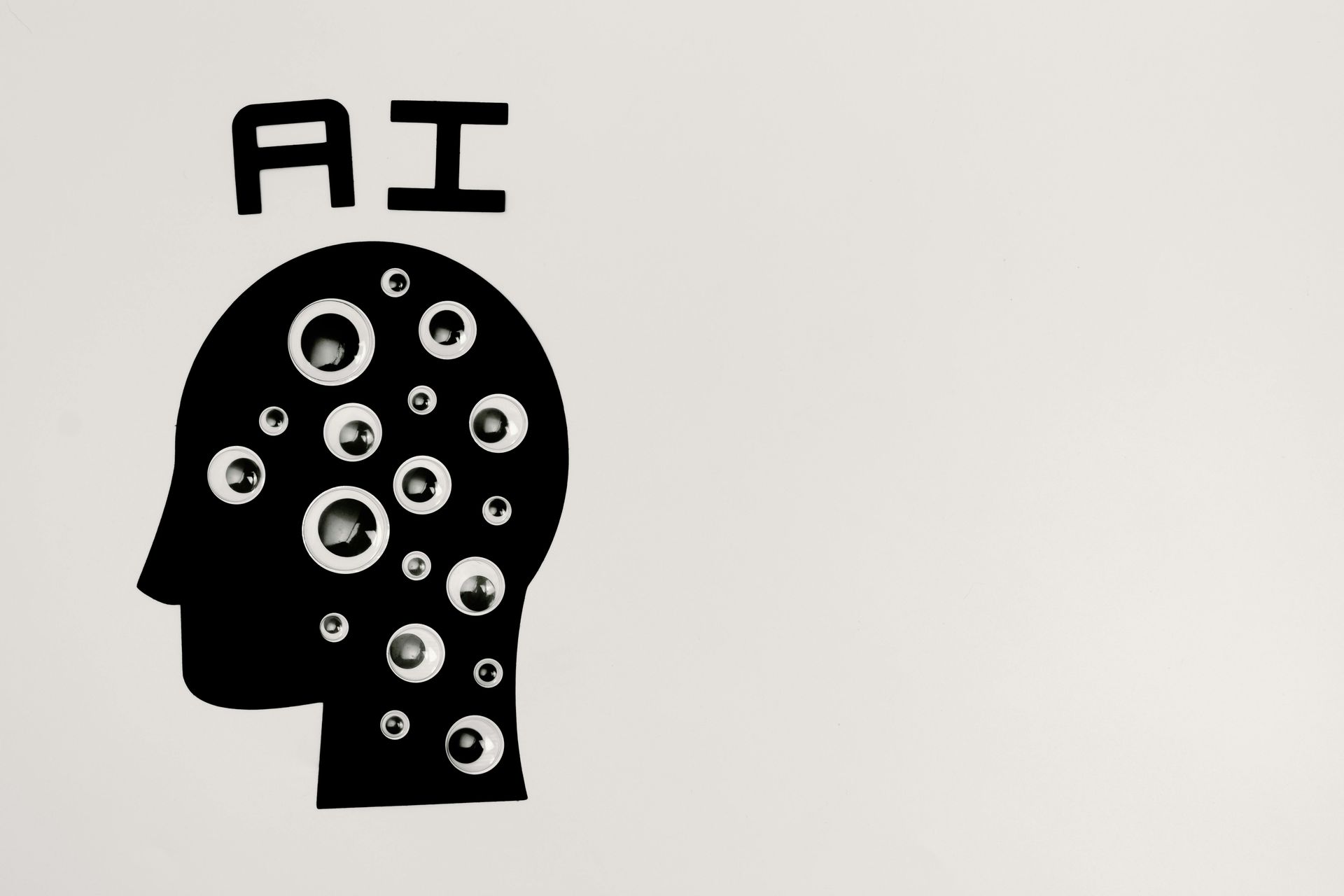
Artificial Intelligence (AI) is the ability of a digital computer or a computer-controlled robot to perform tasks commonly associated with intelligent beings such as learning, problem solving, reasoning, and decision making. AI, and the data centers required, demand more of one thing… Energy. Energy is essential to addressing the challenges of reducing costs on everything from groceries to housing. History proves that economic progress only comes when energy production increases. Long story short, energy fuels the growth that improves people’s lives. AI requires significant computational power primarily due to the complex algorithms and large datasets involved in training and deploying machine learning models. Many AI applications utilize deep learning, which involves networks with multiple layers. Training these networks requires extensive computations, which require large amounts of data for training to improve accuracy and performance. This data must be processed, stored, and analyzed at data centers, consuming a significant amount of computational resources. The more robust the AI workload, the more energy is consumed by the data center. As AI continues to evolve, further advancements in data centers will be necessary to keep pace with its requirements. By 2030, data centers could potentially consume the equivalent energy of New York City's annual energy use. Approximately 60% of that usage would be powered by gas. According to S&P Global, this shift could add 50 GW of gas-fired power to US grids, and increase the natural gas demand by 17%. According to McKinsey & Company, global demand for data center capacity could rise at an annual rate of between 19 and 22 percent from 2023 to 2030 to reach an annual demand of 171 to 219 gigawatts (GW). This contrasts with the current demand of 60 GW, raising the potential for a significant supply deficit. To avoid a deficit, at least twice the data center capacity built since 2000 would have to be built in less than a quarter of the time. Access to power has become a critical factor in driving new data center builds. Without ample investments in data centers and power infrastructure, the potential of AI will not be fully realized. Meeting this demand will require considerably more electricity than is currently produced in the United States. Below are some suggestions to create new solutions to power access and sources. 1 . Investors can funnel investments into utility companies to build out transmission and distribution (T&D) infrastructure in key markets. The demand for data centers and power show no signs of slowing, so T&D markets should respond accordingly. 2. The timeline of building out data centers and those of power infrastructure development can take years. Hyperscalers are building out capacity in new and atypical locations outside the core data center markets because these areas offer cheaper, available power and have the potential for carbon-free infrastructure . Investors have opportunities to fuel growth by accelerating the build-out of fiber or power infrastructure in these secondary locations. 3. Investors can seek to support behind-the-meter solutions to provide power in areas where utilities providers cannot keep up with pace or reliability requirements as local supply availability or transmission constraints worsen. The sites available for these opportunities are limited, but creating more competition and urgency among investors to act sooner than later can help secure the talent, connectivity, and regulatory requirements necessary to run the sites. 4. Investment in clean energy such as solar power or offshore wind. Investment in this space has a long track record, but does have mixed returns. AI has forced the pace of progress. Whether we can provide the energy to keep up with that pace is something only time will tell. Tickers to consider: KALA , EVAX , JTAI , VNRX Sylva Disclaimer: https://www.sylvacap.com/disclaimer
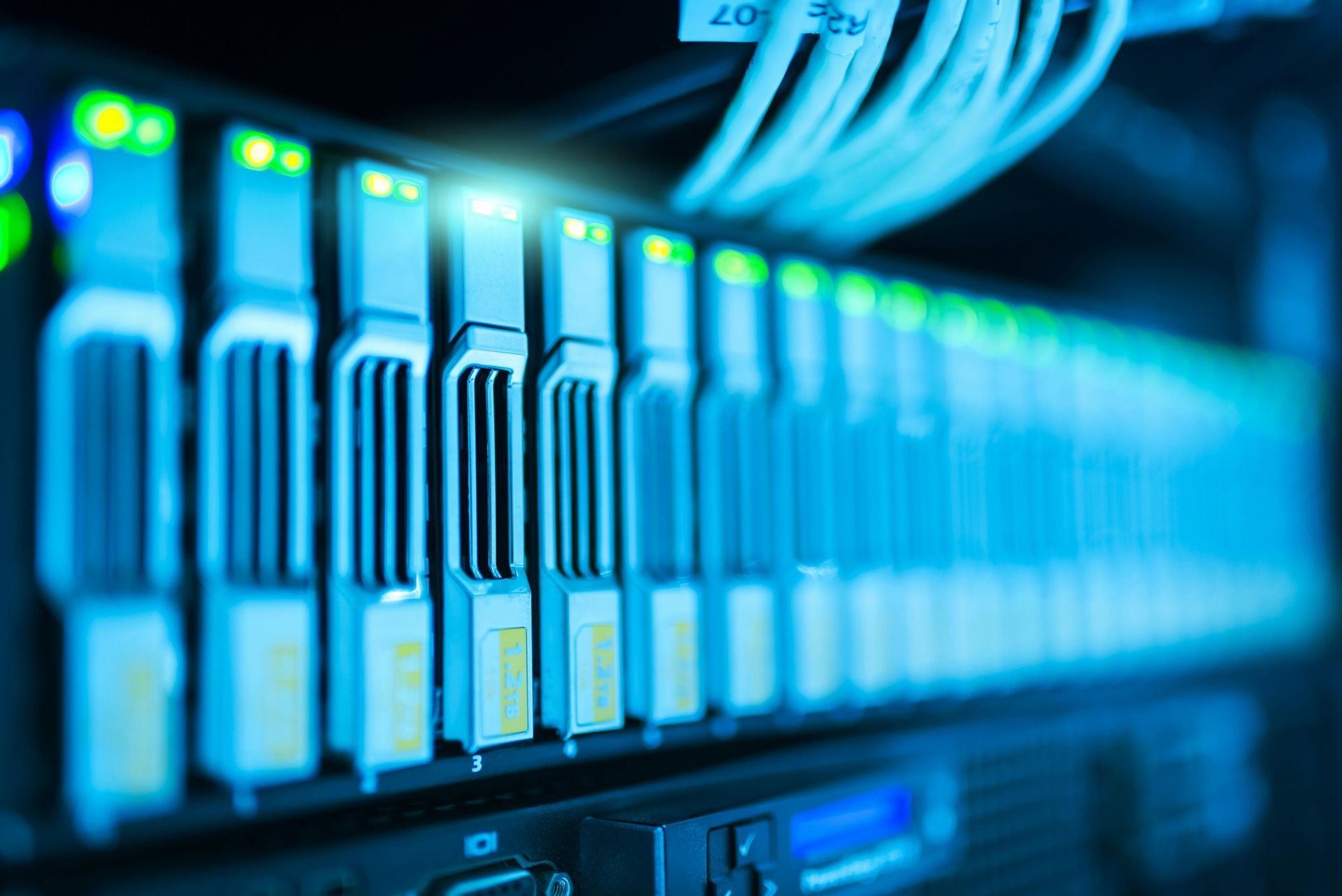
DeepSeek is an AI development firm based in Hangzhou, China. DeepSeek focuses on developing open source Large Language Models (LLM). A large language model is a type of artificial intelligence algorithm that applies neural network techniques with lots of parameters to process and understand human languages or text using self-supervised learning techniques . The company's first model was released in November 2023. The company has repeated multiple times on its core LLM and has built out several different variations. On Jan. 20, 2025, DeepSeek released its R1 LLM at a fraction of the cost that other vendors incurred in their own developments. DeepSeek is also providing its R1 models under an open source license, making it free to use. Deep Seek’s R1 LLM will also have far-reaching impacts for the energy sector. Not only is DeepSeek far cheaper than its rivals, it also claims to be far more energy efficient. This is an important declaration, as data center energy demand growth has recently been pushed to extreme heights thanks to the enormous spread of AI. The scale of these newfound energy needs are so significant that it has single-handedly destroyed the tech sector’s hopes of meeting its own decarbonization goals, placed stress on energy grids around the world, and threatened the energy security of entire nations. The scale of the challenge posed by data center demand poses a serious money-making opportunity for energy providers. “Energy firms ranging from small reactor startups to incumbent utilities to gas producers — and plenty in between — see data centers as a critical U.S. market,” One segment of the energy industry that could potentially benefit from the expected data center boom is nuclear power. Older power plants have been closing across the country for the past decade. Yet, atomic power has seen a surge in interest and investments in the last year, as owners revive shuttered plants and tech companies seek contracts for the electricity. Nikki Hsu, Analyst for Bloomberg Intelligence Utilities, said that power demand is going to climb from homes and factories that are increasingly shifting to electricity. “Demand is definitely going to rise, but by how much, we don’t know,” she said. “Nobody knows exactly what AI demand will be.” Rob Thummel, Senior portfolio manager at Tortoise Capital, asserts that AI will boost natural gas. He alluded that natural gas could steal some of growth from nuclear power developers, since reactors typically take longer to build and are far more expensive than gas plants. “We still think natural gas will be a winner here, primarily because it is the lowest cost from a reliability perspective,” Thummel said. DeepSeek’s efficiency could even lead to more widespread use of AI. According to Carlos Torres Diaz, head of power markets research for Rystad Energy, “if data centers become more efficient, they may end up simply processing more data — making it difficult to model their future energy use.” It is important to remember that if you download Deep Seek, then all of your data will be sent back to China. However, since Deep Seek open sourced its R1 LLM , then it is available to everyone. Venture capitalist and newly appointed AI and crypto czar for the White House, David Sacks, stated in an interview with Fox Business that Perplexity and Ollama are two American hosted companies that will allow you to have access to Deep Seek without sending all your data back to China. Tickers to consider: KALA , EVAX , JTAI , VNRX Sylva Disclaimer: https://www.sylvacap.com/disclaimer
